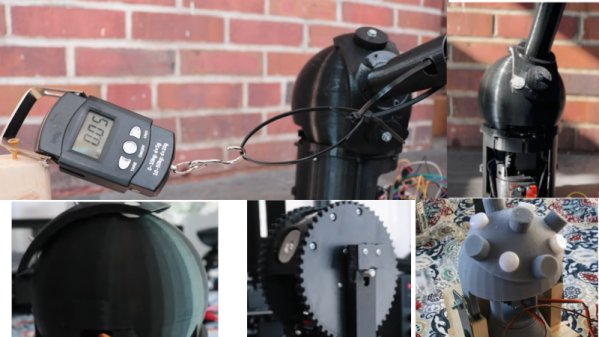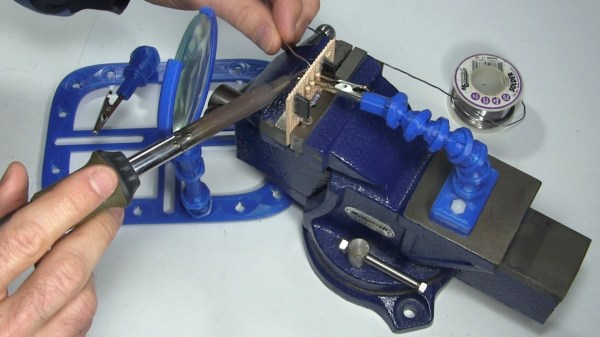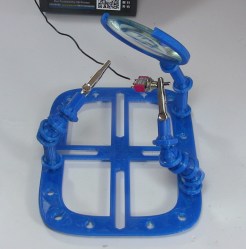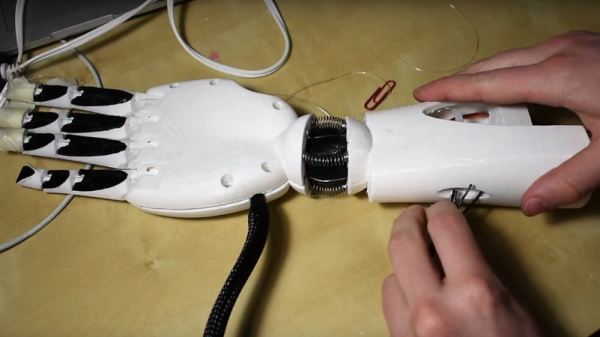Ball and socket joints are useful, but making a part slide over the surface of a sphere, held by magnets, requires a lot of fiddling to get right. We admire persistence and nailing all the details. [Matthew Finlay] has been doing just that with his ball and socket robot. He’s on version six, a testament to his desire to do the idea justice. Luckily for us, he’s documented each version as he went.
Version one, made from a DIY Christmas ornament ball, had no stability around the radial axis, and oscillated badly. Version two demonstrated the problem of centering the mechanism in the ball. Version 3 fixed this problem (it’s covered in the same video). Then version four fixed many of the assembly issues and replaced the servo controllers with an Arduino, but the ‘arm’ piece was too small and mechanically iffy.
Version five used a fabricated bearing. Matthew used airsoft rounds as the balls. Not a good idea. And assembly was a nightmare. So all this progress up to version six shows his improving technique. Artists say ‘work on your process, not on your pieces’. He’s become much more analytic about what’s needed. He’s started measuring the strength of the robot, and handled issues like adding limit switches so it doesn’t crash at the limits of travel.
Fun build, reminds us of [Stephen Dufresne]’s BB-8.
Continue reading “Practice Makes Perfect For This Ball And Socket Robot”















